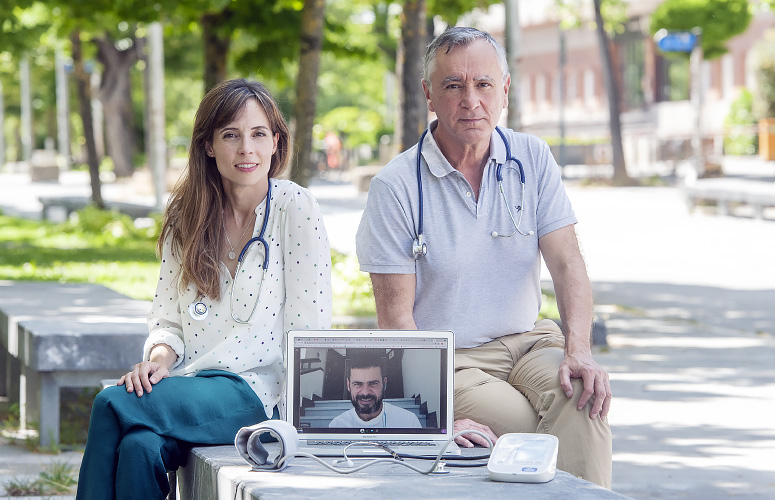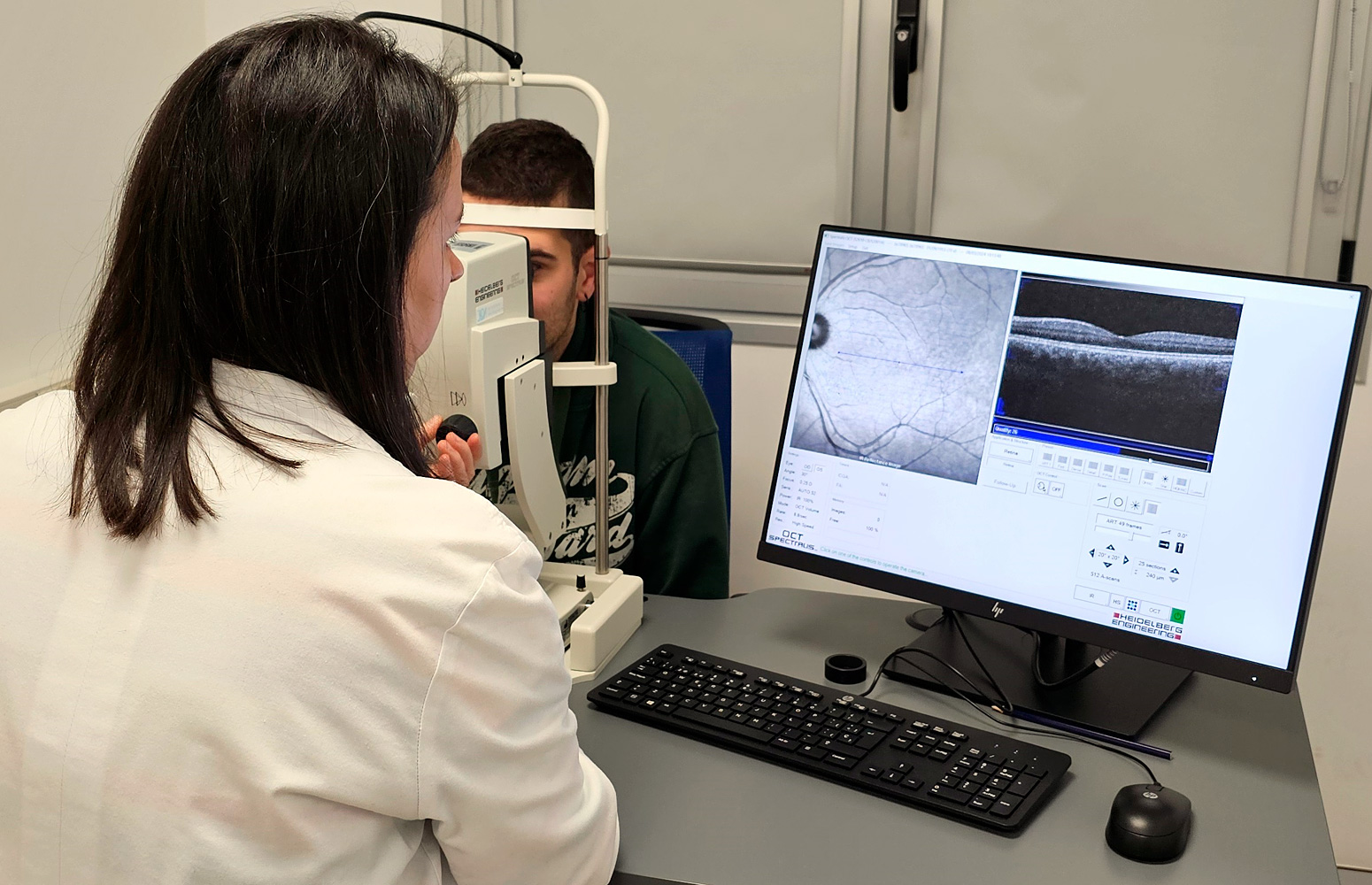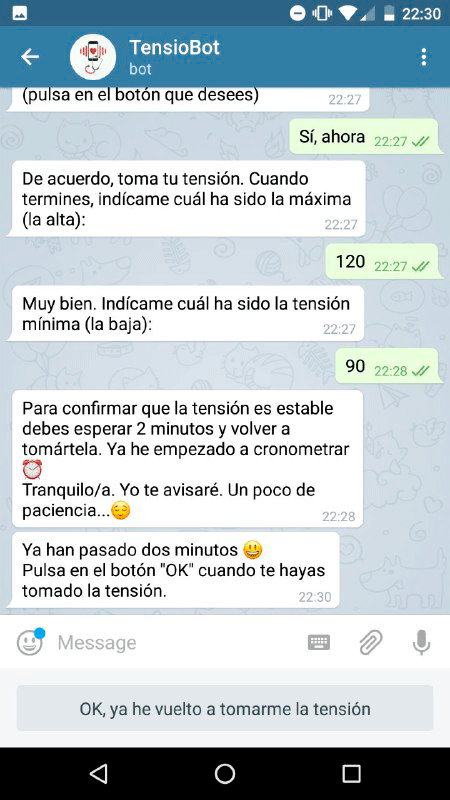A multidisciplinary team from the UPV/EHU has launched TensioBot, a computer program that sends instructions and alerts to patients, in conversation format, via Telegram, so that they can take their blood pressure correctly at home. It is a cost-effective tool that does not require users to learn anything new, as society is well accustomed to using instant messaging. The application has been published under an open source licence.
TensioBot, a Telegram-based assistant that helps patients monitor their blood pressure
A study by the UPV/EHU-University of the Basque Country creates a chatbot to help patients, through a conversation, to measure their blood pressure at home
- Research
First publication date: 14/06/2021

Hypertension is a chronic disease that can lead to serious health problems. Patients with arterial hypertension are required to measure their blood pressure at home, which can have some drawbacks, such as forgetting to check it or recording the values, errors in writing down the figures, the inability to immediately notify health care staff about out-of-range blood pressure values, etc.
So three UPV/EHU researchers -Leyre Echeazarra from the Department of Physiology, Juanan Pereira from the Department of Computer Languages and Systems, and Ramón Saracho from the Department of Medicine- have created TensioBot, a chatbot or computer system capable of simulating conversations to help patients take their blood pressure at home. "It is a Telegram-based bot. It sends patients reminders to check their blood pressure, advice on good blood pressure checking practices, tracks measurements (presenting data in graph format), sends medical alerts and allows healthcare staff to access updated measurement information", said researcher Juanan Pereira.
TensioBot has been tested over a two-year period with 112 patients (half used the bot and half did not). It has been shown that although the bot group displayed similar results to the non-bot group in terms of adherence to the blood pressure monitoring programme, the bot users displayed better results in terms of knowledge and skills on best practices for checking blood pressure. The users have also rated the bot very positively, have highlighted its usefulness and ease of use, and have even continued to use it after the test phase was over. Healthcare professionals have also given the bot's usefulness the green light, as they can obtain data automatically without having to input them manually into the computer.
Instant messaging
Pereira pointed out that "being able to use instant messaging is a great advantage, given that the users (generally elderly) have no problem in using it. They are highly accustomed to using Whatsapp, Telegram, etc. Besides, they don't know that there is a machine behind the chat". The chat is prepared for use in Basque, Spanish and English and has been published under an open-source licence so that it can be used in other hospitals and programmes. In addition, if you want to use it in other languages, the only thing that needs to be done is translate the chat threads.
On the other hand, "it is a very cost-effective and efficient system, as no special installation or production is required, and we are already exploring possibilities for other areas". Specifically, Ramón Saracho is exploring in his thesis the possible use of apps of this type in the daily work of doctors. Going forward, they have other lines of research in mind: "Today we use text, but voice interfaces are increasingly being created in all languages. In addition, another line of improvement would be to achieve automatic communication between the measurement system and the bot, but it would have to be Telegram that allows the connection", Pereira said. He also stressed that such systems could be very useful in the current pandemic situation, for example, to avoid having to go to health centres in person.
Bibliographic reference
- TensioBot: a Chatbot Assistant for Self-Managed in-House Blood Pressure Checking
- Journal of Medical Systems
- DOI: 10.1007/s10916-021-01730-x






